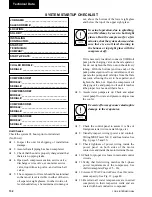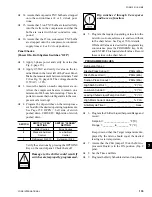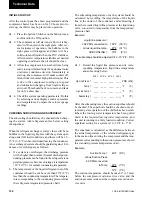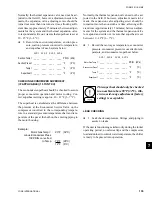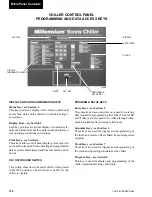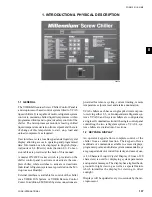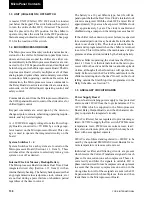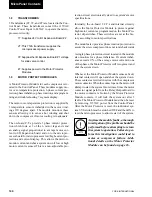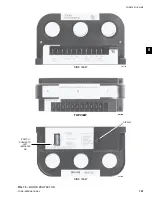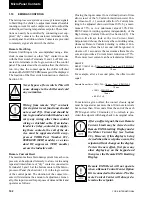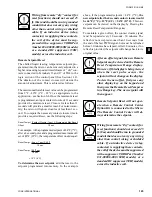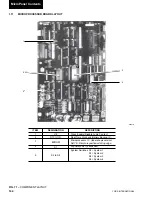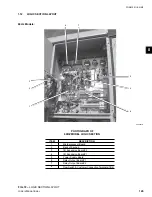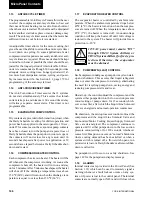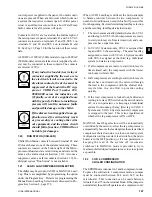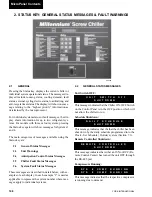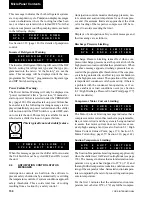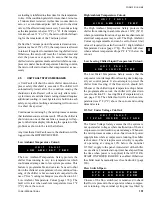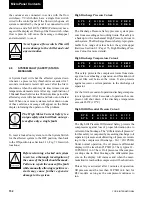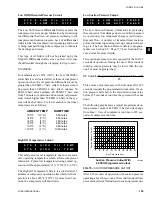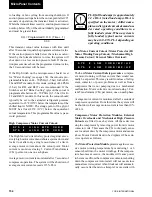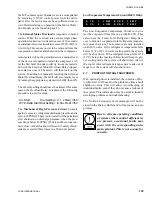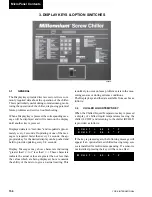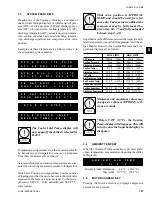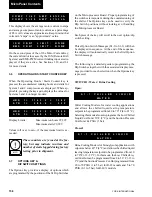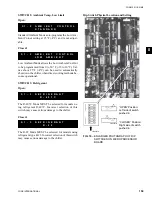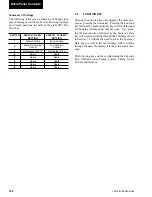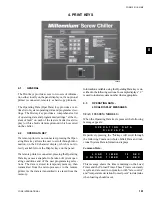
146
YORK INTERNATIONAL
1.13
ANTI-RECYCLE TIMER
The programmable Anti-Recycle Timer allows the user
to select the compressor anti-recycle time to best suit
their needs. Motor heating is a result of inrush current
when the motor is started. This heat must be dissipated
before another start takes place or motor damage may
result. The anti-recycle timer assures that the motor has
sufficient time to cool before it is restarted.
An adjustable timer allows for the motor cooling, but
gives the user the ability to extend the anti-recycle timer
to cut down on cycling. In some applications, faster
compressor start response is necessary and shorter anti-
recycle times are required. These needs should be kept
in mind but whenever possible the timer should be ad-
justed for the longest period of time tolerable. 600 sec-
onds is recommended, although 300 seconds provides
adequate motor cooling time. Longer periods will al-
low more heat dissipation, reduce cycling, and possi-
bly increase motor life. See Section 8.2, page 179 for
programming of the anti-recycle timer.
1.14
ANTI-COINCIDENCE TIMER
The Anti-Coincidence Timer assures that 2 systems
do not start simultaneously. This assures that inrush
current is kept to a minimum. A 60 second time delay
will always separate motor starts. This timer is not
programmable.
1.15
EVAPORATOR PUMP CONTROL
Dry contacts are provided which transition (close) when
the Daily Schedule is calling for chiller operation and
power has been applied to the micropanel for 30 sec-
onds. If for some reason the evaporator pump contacts
have been closed to run the pump and a power loss or
Daily Schedule shuts the pump down (contacts open),
the contacts will not reclose for any reason until 30
seconds has elapsed after power re-application or 30
seconds have elapsed between a Daily Schedule shut-
down and restart.
1.16
COMPRESSOR HEATER CONTROL
Each compressor has its own heater. The heater will be
off whenever the compressor is running. As soon as the
compressor shuts off, the heater will turn on and stay
on for 5 minutes. After 5 minutes has elapsed, the heater
will shut off if the discharge temperature rises above
150 °F (66°C) and will turn on when the discharge tem-
perature is equal to or less than 150 °F (66°C).
1.17
EVAPORATOR HEATER CONTROL
The evaporator heater is controlled by ambient tem-
perature. When the ambient temperature drops below
40°F (4°C), the heater is turned on when the compres-
sors are turned off. When the temperature rises above
45°F (7°C), the heater is turned off. An undervoltage
condition will keep the heater off until full voltage is
restored to the system. The heater will provide freeze
protection to -20°F.
115VAC power must remain “ON”
through CB4 (3 System chillers) or
CB5 (4 System chillers) for freeze pro-
tection. Otherwise, the evaporator
must be drained.
1.18
PUMPDOWN (LLSV) CONTROL
Each compressor undergoes a pump down cycle on start-
up and shutdown. This assures that liquid refrigerant
does not enter the compressor on start-up, eliminating
the need for recycling pump down, saving energy and
reducing compressor starts and wear.
On start-up, the controls unload the compressor and the
system either pumps down to the low suction pressure
cutout setting or pumps down for 15 seconds, which-
ever comes first, after which the Liquid Line Solenoid
Valve is energized and normal operation commences.
On shutdown, the microprocessor controls unload the
compressor and the Liquid Line Solenoid Valve and
Economizer/Motor Cooling Liquid Supply Solenoid
Valve are de-energized. The compressor continues to
operate until it either pumps down to the low suction
pressure cutout setting or for 180 seconds, whichever
comes first. Pump down occurs on “normal” shutdowns
where cooling demand has been satisfied or when a
system switch is turned off, a flow switch opens, run
permissive is lost or a Daily Schedule or a Remote Shut-
down is called for.
No pumpdown will occur on a safety shutdown. See
page 149 for the pumpdown display message.
1.19
ALARMS
Internal contacts are provided in the Power Panel (See
Section 1.12) which can be used to remotely signal a
warning whenever a fault lockout occurs on any sys-
tem or if power is lost to the control panel. The internal
contacts are normally open (N.O.) and will close when
MicroPanel Contents
Summary of Contents for MILLENNIUM YCAS 250
Page 61: ...61 YORK INTERNATIONAL FORM 201 18 NM3 This page intentionally left blank 7...
Page 65: ...65 YORK INTERNATIONAL FORM 201 18 NM3 LD04179 7...
Page 79: ...79 YORK INTERNATIONAL FORM 201 18 NM3 This page intentionally left blank 7...
Page 83: ...83 YORK INTERNATIONAL FORM 201 18 NM3 This page intentionally left blank 7...
Page 87: ...87 YORK INTERNATIONAL FORM 201 18 NM3 LD04268 7...
Page 195: ...195 YORK INTERNATIONAL FORM 201 18 NM3 This page intentionally left blank...

